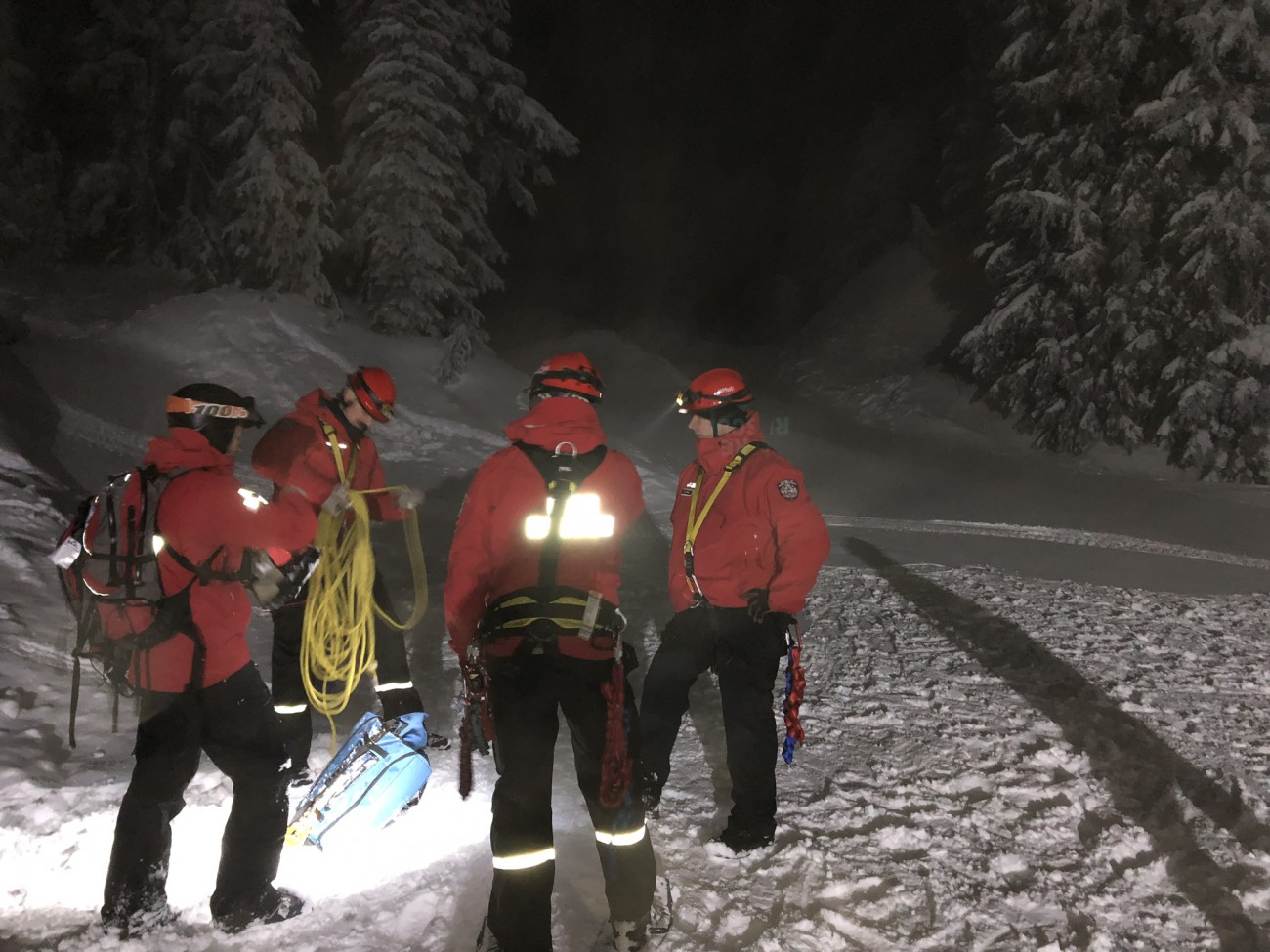Responding to incidents
Our firefighters are highly trained, experienced, and industry certified to fight fires of all types, from those in structures to fires in vehicles and boats.
In addition to battling fires, our firefighters routinely respond to calls for medical assistance, rescues of all kinds, hazardous material concerns, requests for public assistance, and more.
In 2020, we responded to 5,192 incidents, either on our own or as part of a tri-municipal effort. Our turnout time was 2 minutes and 16 seconds for 90% of our calls , and our response time was 8 minutes and 29 seconds for 90% of our calls.
Top 5 Incident Call Outs for 2020
Our firefighters respond to a wide range of incidents, including fires, accidents, rescues, and medical emergencies.
Due to a temporary change in protocols for the COVID-19 pandemic, there has been a decrease in the number of responses for medical aid in 2020.
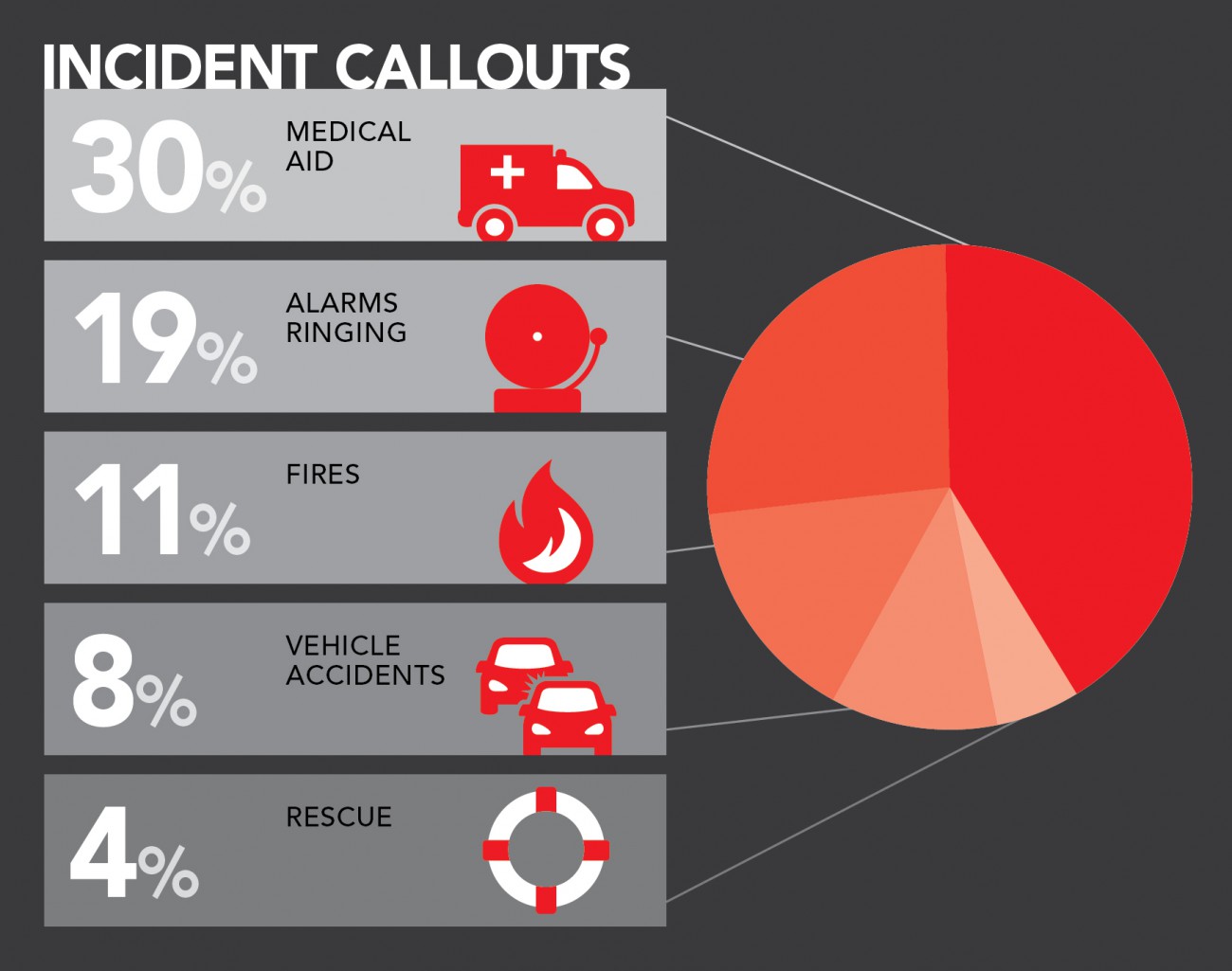
Response Time By Fire Station
Firefighters respond to incidents from one (or more) of five different fire stations, depending on the emergency’s location and size.
In 2020, we achieved an overall response time of 8 minutes and 29 seconds for 90% of our emergency responses. Response time is how much time elapses between when the fire department receives a call, and the first arrival of firefighters on the scene.
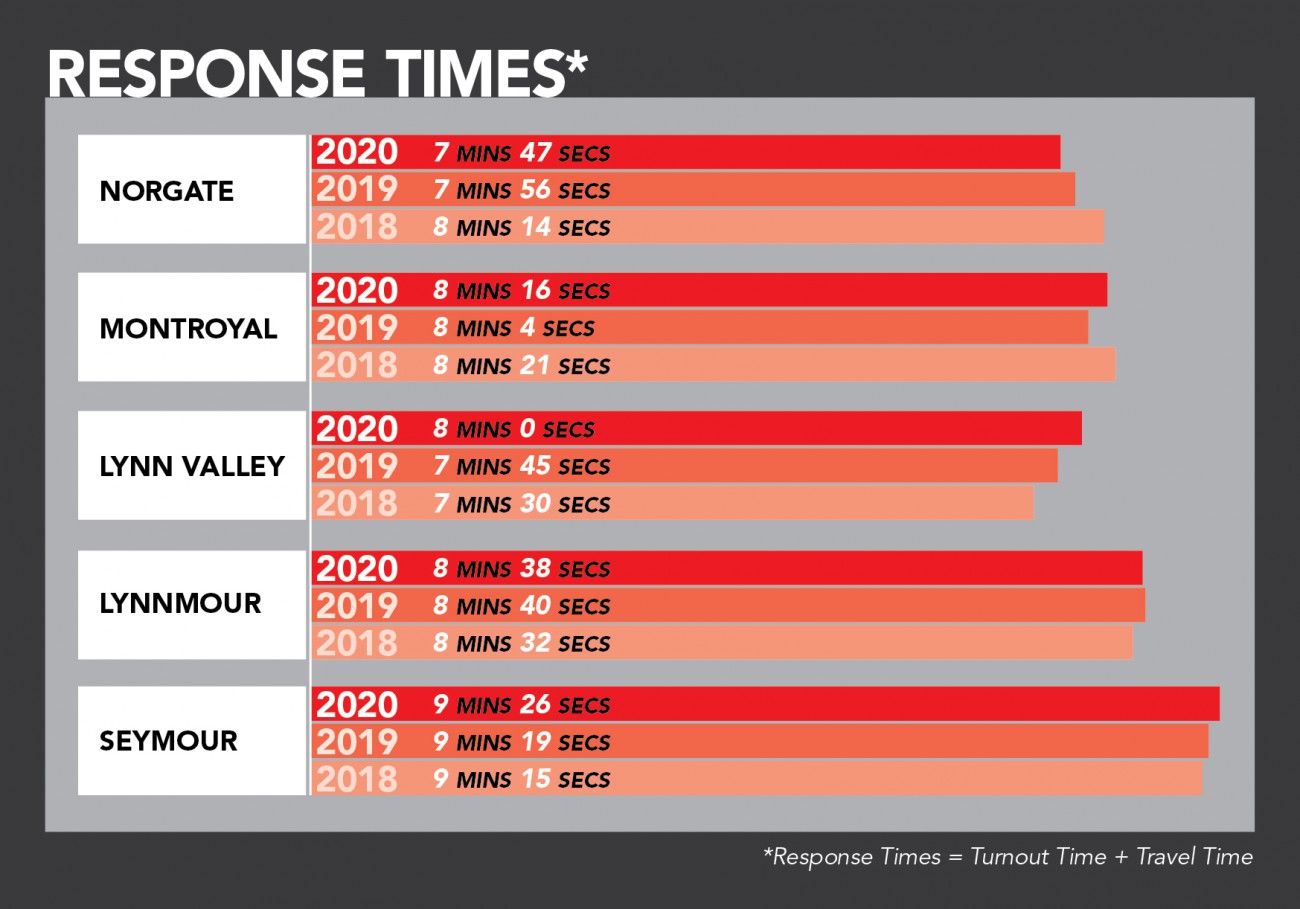
Turnout Time By Incident
In 2020, we achieved a 2 minutes, 16 seconds turnout time across all incident types when responding to 90% of our incidents.
Turnout time measures the firefighters’ ability to stop what they are doing, get to the appropriate fire engine, put on their personal protective equipment, board the fire engine, and safely secure themselves for travel to the emergency.
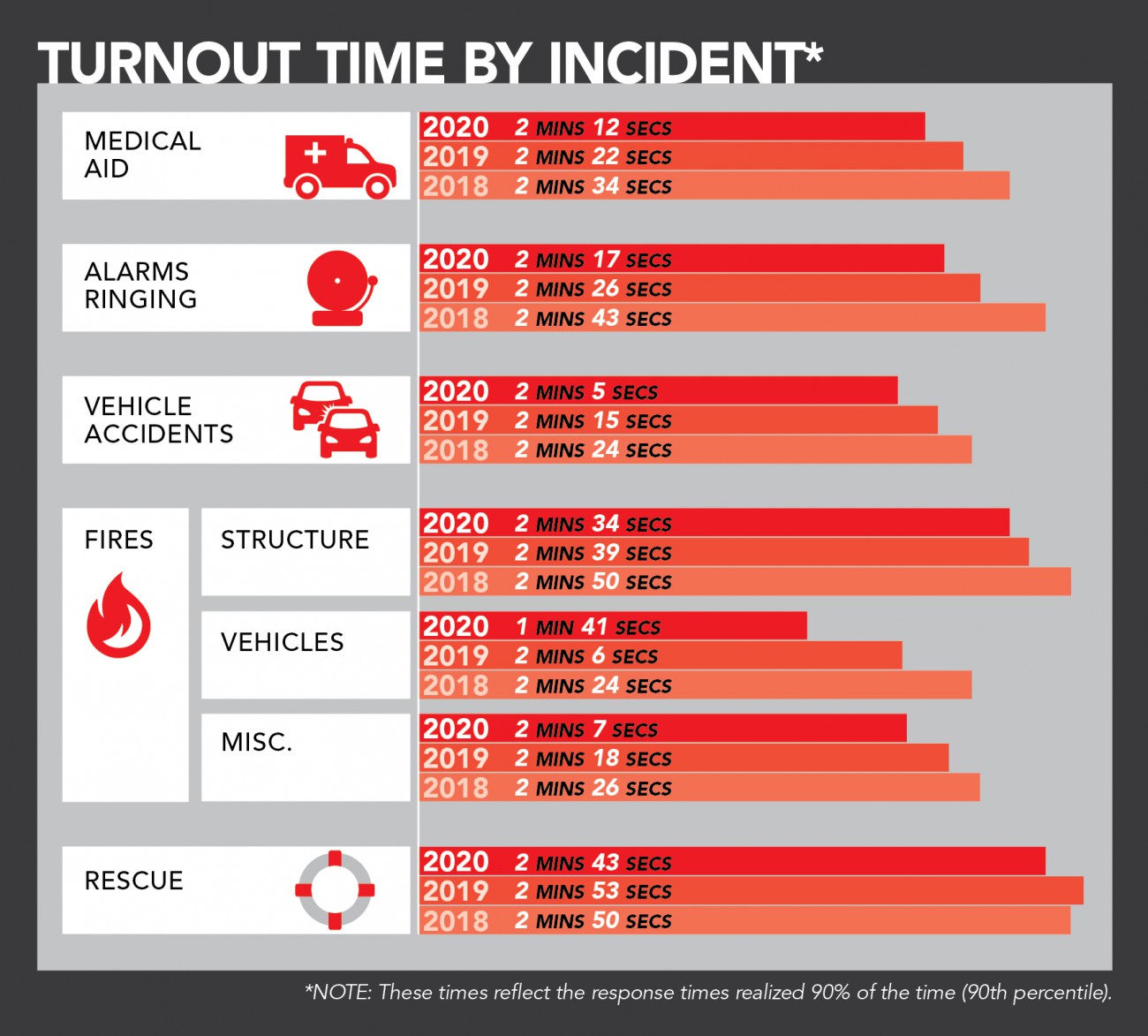
A Closer Look at Technical Rescues
In addition to its urban core, the District of North Vancouver also includes hundreds of square kilometres of rugged mountain wilderness with dozens of hiking and mountain biking trails intersected by rivers and ravines.
We are also home to Grouse Mountain and Seymour Mountain ski operations, as well as the Grouse Grind trail.
Our team is unique in Metro Vancouver because of the number of highly technical rescues we execute each year, and the close mutual support relationship we have with the all-volunteer North Shore Rescue (NSR) team.
In 2020, we attended 102 rescue incidents, with 48% of those incidents occurring on Fromme Mountain, Seymour Mountain or, Lynn Canyon.
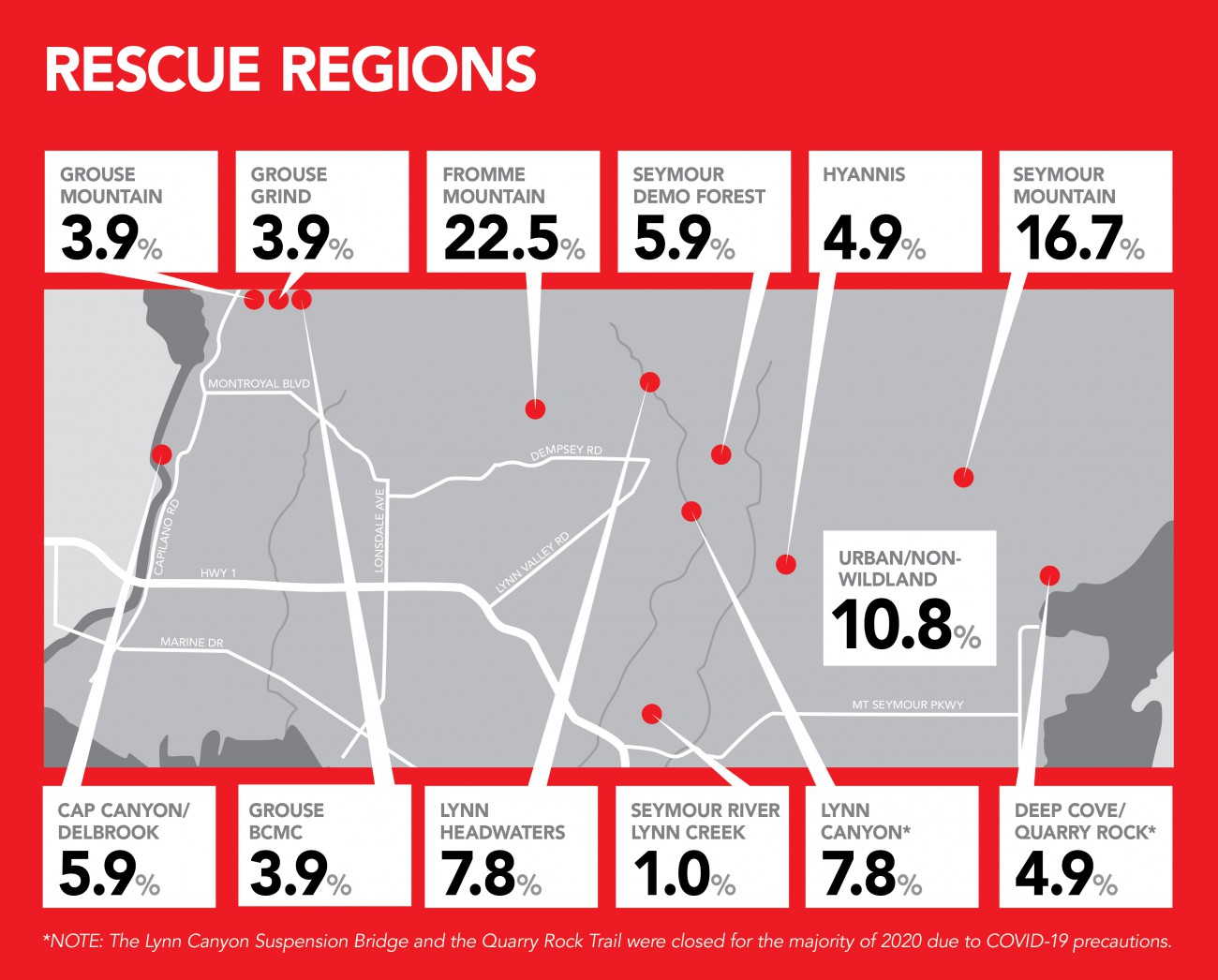
Typical Rescues
Of the 102 rescue incidents the DNVFRS responded to in 2020, over 89.2% were related to outdoor recreation in our wild spaces (hikers, mountain bikers, swimmers, kayakers, etc.) followed by rescues in elevators, at 10.8%.
Our firefighters are trained to industry standards in high-angle rope rescues and swift-water rescue techniques that are used every summer in Lynn Canyon, Capilano Canyon, and Quarry Rock in Deep Cove.
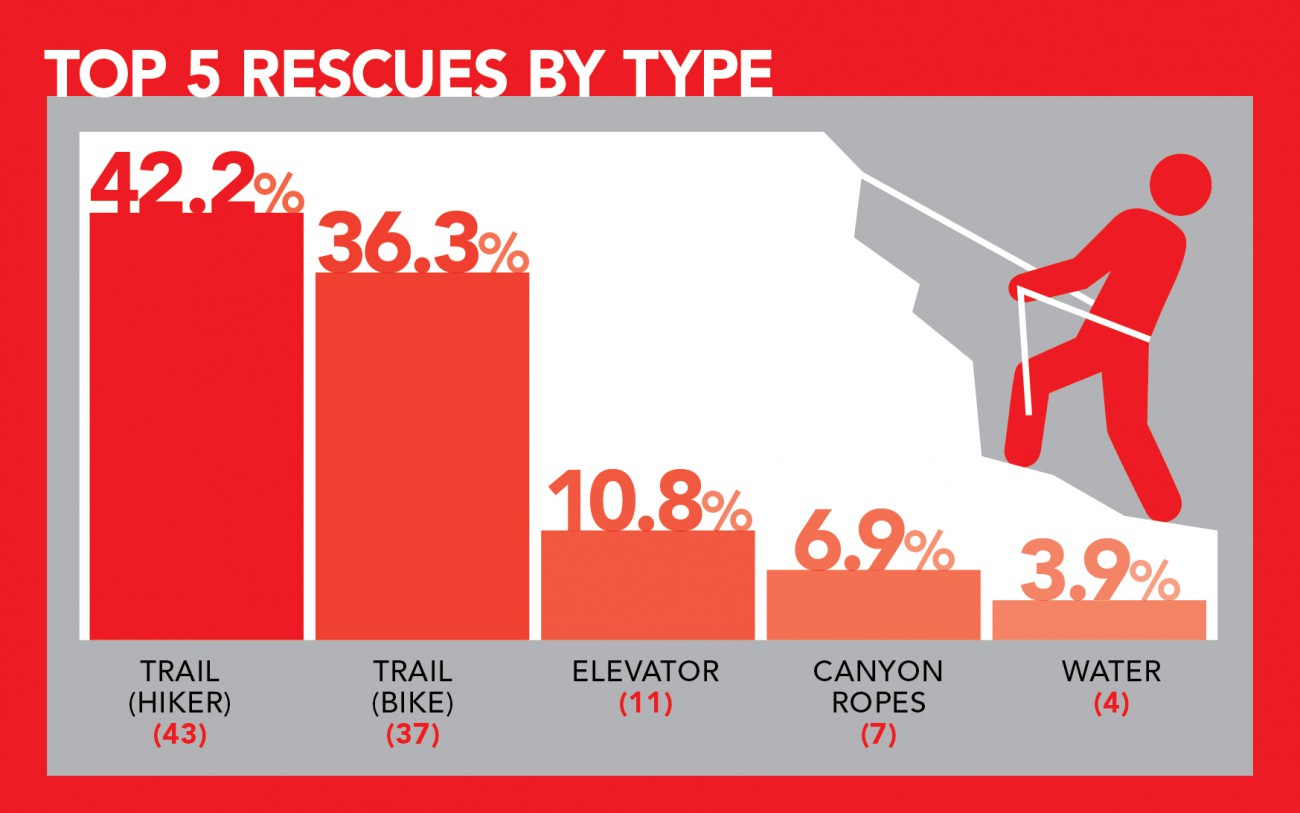
Working with North Shore Rescue
When responding to wildland search and rescues, and technical, trail, and water rescues that occur in the District, we immediately liaise with North Shore Rescue (NSR) to coordinate our response and ensure that each agency is aware of the incident.
Our working relationship with NSR allows us to capitalize on the skill sets of both of our agencies to best serve residents and visitors, while providing an efficient and coordinated response to all wildland emergencies on the North Shore.
We also work collaboratively to exchange information and host training programs that focus on our respective strengths as response agencies.
Due to provincial COVID-19 restrictions, we had limited opportunities to participate in interagency training activities in 2020. However, we were able to participate in a ski lift evacuation training exercise with NSR and the Mount Seymour Ski Patrol in February 2020.
Moving forward, we plan to provide supplemental rope rescue and medical training to NSR, and look to participate in additional patient location and helicopter operations training opportunities with NSR instructors.
You can read more about the life-saving services that North Shore Rescue provides on their website.
Responding to Marine Emergencies with Royal Canadian Marine Search and Rescue
We work with Royal Canadian Marine Search and Rescue (RCMSAR) on all marine and waterfront emergency responses in the District of North Vancouver.
This includes transporting firefighters and equipment to remote and boat-only access locations, providing water-based information and intelligence for shore-based emergency operations, and performing water rescues in areas that are inaccessible by DNVFRS firefighters.
As with our other partner agencies, we work closely with RCMSAR to share information and provide training that capitalizes on each agency’s strengths.
Due to provincial COVID-19 restrictions, we had limited opportunities for interagency training activities in 2020.
However, we were able to work with RCMSAR members from both the North Vancouver and West Vancouver stations during a marine firefighting training course hosted at Seaspan Vancouver Shipyards in early 2020.
DNVFRS plans to resume providing medical aid, rope rescue, and self-contained breathing apparatus training to RCMSAR in 2021 and engage our members in boat safety and fleet response capability awareness training delivered by RCMSAR instructors.
For more information about North Vancouver Royal Canadian Marine Search & Rescue, please visit their website.

